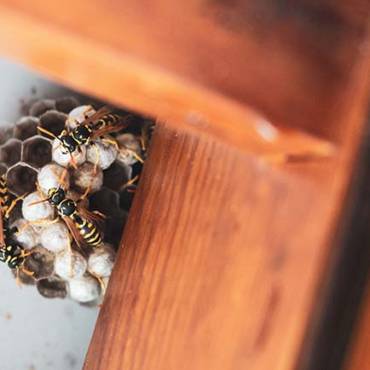Rodent-Proofing Your Home | Practical Prevention Techniques and Tips
Dealing with rodents in your home can be a nightmare for any homeowner. Mice and rats not only cause damage to your property and belongings but also pose significant health risks, carrying various diseases and causing contamination. Bee Smart Pest Control understands the importance of maintaining a rodent-free home, and in this article, we will be discussing practical prevention techniques and tips, enabling you to protect your property and ensure a safe and comfortable living environment for you and your family.
To effectively prevent and manage a rodent infestation, it is essential to be proactive and implement preventive measures. Rodents are notorious for their ability to adapt to different environments, making it crucial to be thorough when addressing potential entry points and sources of food or shelter. This article aims to provide educational, informative, and helpful content to assist you in our shared goal of keeping rodents away from your home.
Through practical prevention techniques, you can take control of your home’s rodent situation, reduce the likelihood and impact of infestations, and minimize the associated damage and health risks. Our comprehensive guide will cover essential topics such as identifying common rodents, understanding their behavior, sealing entry points, managing food sources, and employing deterrents.
Discover the world of rodents and the many ways you can prevent and monitor their presence in your home, ensuring that the living environment remains stress-free and safe for all inhabitants. With Bee Smart Pest Control, you’ll have the knowledge you need to maintain a rodent-free home now and for years to come.
1. Identifying Common Rodents and Understanding Their Behavior
Recognizing the types of rodents that commonly invade homes and understanding their behavior patterns are crucial initial steps in rodent-proofing your home. The two most common species are the house mouse (Mus musculus) and the Norway rat (Rattus norvegicus).
House mice have small, slender bodies, usually around 3 to 4 inches long, with long, thin tails. They can be found in a variety of colors, most commonly gray or light brown. They prefer to nest in warm, secluded areas and are excellent climbers, which allows them to access various parts of a structure.
Norway rats, on the other hand, have larger, more robust bodies, measuring up to 10 inches long with a shorter tail. They are usually brown or grey, with coarse fur and a more prominent, hairless tail. They prefer basements, crawl spaces, burrows, and other deep recesses where they can stay hidden.
Both species are primarily nocturnal and exhibit similar nesting, feeding, and foraging behaviors. Familiarizing yourself with their habits will enable you to better predict and manage their movements within your home.
2. Sealing Entry Points
Rodents possess a remarkable ability to enter homes through small openings; mice can fit through gaps as small as ¼ inch, while rats can squeeze through holes approximately ½ inch in diameter. It’s essential to inspect your home’s exterior and seal any potential entry points to prevent rodents from gaining access.
– Start by inspecting the foundation of your home for cracks or gaps and use materials such as mortar or steel wool to fix them.
– Check for spaces around windows and doors and use weatherstripping or door sweeps to seal these areas.
– Examine your roof and ensure there are no broken or missing shingles.
– Seal any gaps around utility lines or pipes entering your home with caulk or steel wool.
3. Managing Food Sources and Shelter
A key component in rodent-proofing your home is eliminating any sources of food or shelter that may attract these pests. By doing so, you can reduce the likelihood of an infestation and create an unwelcoming environment for rodents.
– Store all food, including pet food, in secure, airtight containers.
– Clean up any food spills and crumbs promptly to avoid attracting rodents.
– Ensure that garbage disposal areas are clean and that garbage cans have tight-fitting lids.
– Remove potential nesting materials, such as paper, cardboard, or old clothes, from storage areas.
– Keep vegetation trimmed back and away from your home’s exterior to limit potential hiding places for rodents.
4. Employing Rodent Deterrents
In addition to sealing entry points and managing food sources, there are several proactive deterrents that can be employed to keep rodents away from your living spaces.
– Consider using devices such as ultrasonic repellents, which emit high-frequency sound waves that are inaudible to humans but can deter rodents from entering the area.
– Place natural repellents, like mint, mothballs, or ammonia-soaked cotton balls, in strategic locations where you suspect rodents might enter or linger.
– Adopting a cat can also serve as a natural deterrent since cats are natural predators of rodents. Not only will they help keep rodents at bay, but will also serve as great companions!
Conclusion
Implementing practical prevention techniques and tips and staying vigilant in monitoring your home for signs of rodent activity are crucial in maintaining a rodent-free living space. By understanding the behavior patterns of common rodents, sealing entry points, managing food sources, employing deterrents, and seeking professional help when necessary, you can protect your property and ensure a safe, comfortable environment for you and your family.
At Bee Smart Pest Control, our dedicated team understands the importance of rodent-proofing your home, and we’re here to help you navigate through these prevention methods and tackle infestations before they escalate. Trust our expertise in rodent control services so you can focus on enjoying a peaceful, stress-free home. Call us today.




